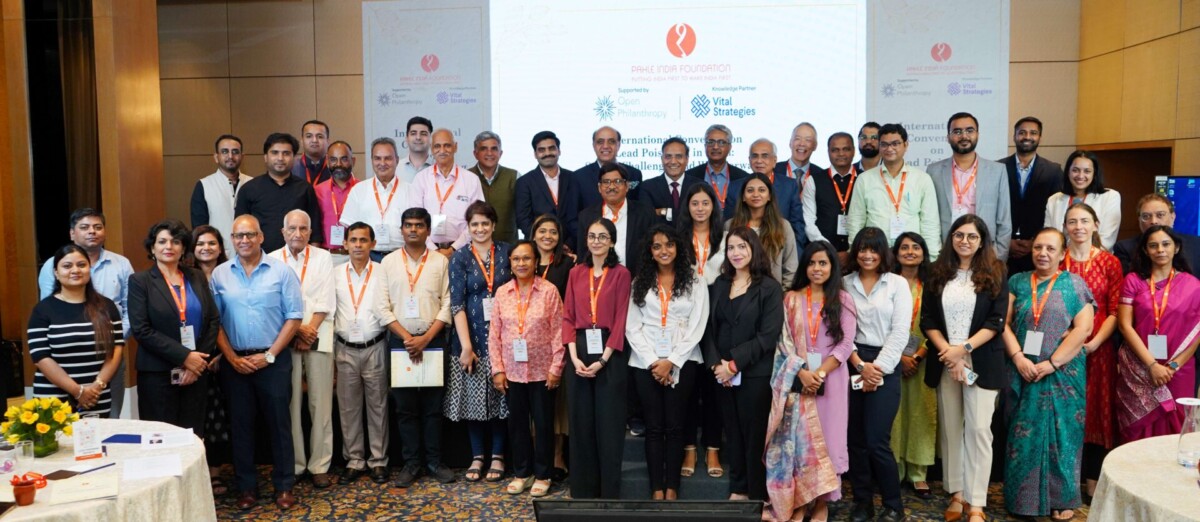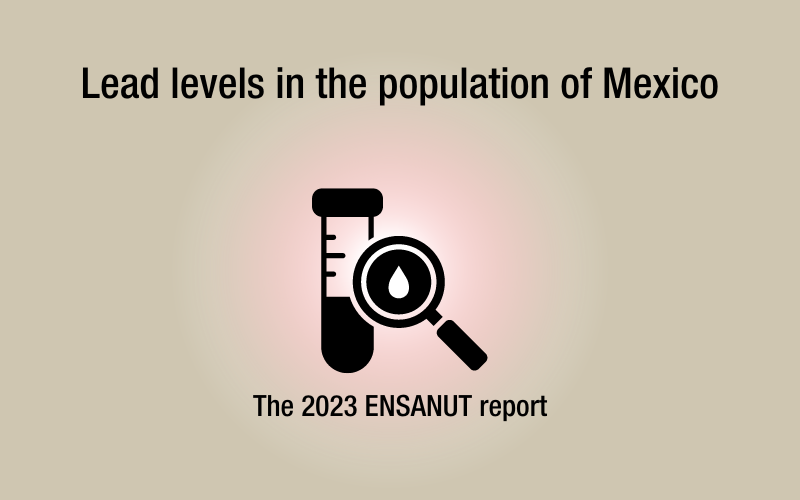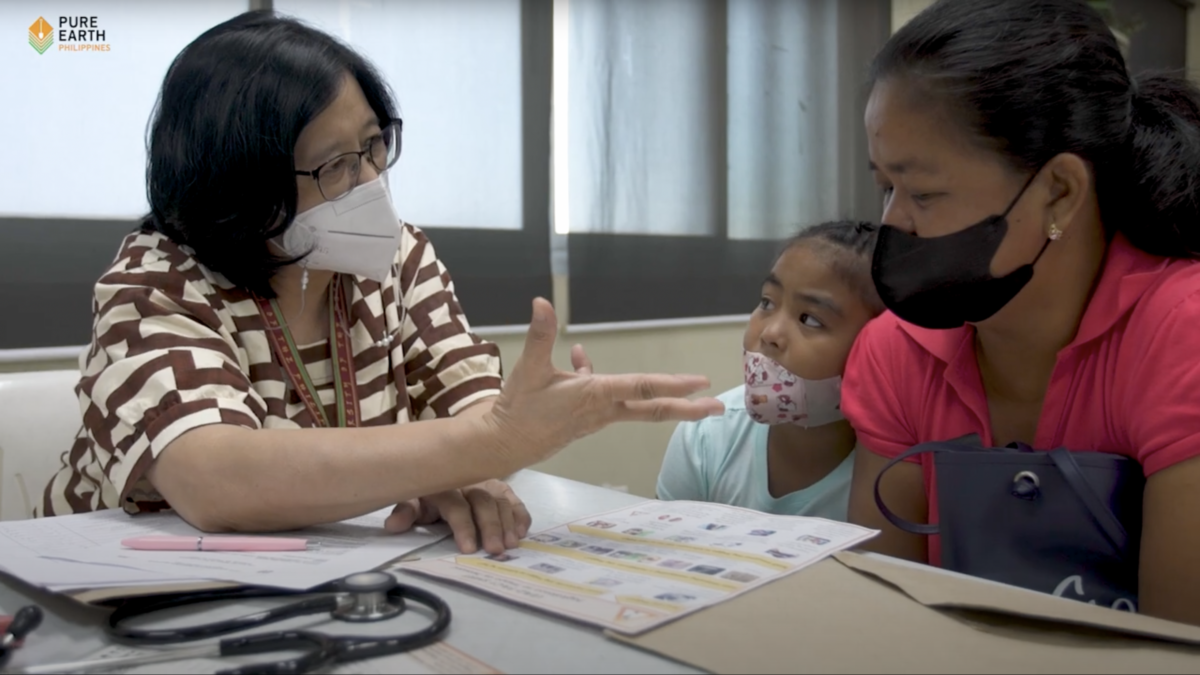As an advocate deeply entrenched in the fight against lead poisoning, I had the distinct honor of attending the recent international convening titled “Lead Poisoning in India: Status, Challenges, and Way Forward,” organized by the Pahle India Foundation, knowledge partner Vital Strategies and supported by Open Philanthropy. This event, held in New Delhi, was a seminal moment in our collective efforts to address one of the most pervasive yet overlooked public health crises of our time—lead poisoning.
The convening brought together over 60 experts, policymakers, scientists, and doctors from India, the United States, Bangladesh and other countries, creating a robust platform for dialogue, collaboration, and action. It was a rare convergence of minds committed to tackling lead exposure, an issue that silently but severely impacts millions of lives in India and beyond.

Pic 1: Lead Poisoning in India: Status, Challenges, and Way Forward convening speakers and participants
The Alarming Scale of Lead Poisoning in India
The magnitude of lead poisoning in India is staggering, and the data presented at the conference underscored the urgent need for action. Dr. Howard Hu, Professor of Preventive Medicine at the University of Southern California and a member of Pure Earth’s Board, emphasized the global threat of lead poisoning, with India bearing a significant burden. “Lead impacts every part of the body, with the most severe effects on the brain. It mimics calcium but fails to function like calcium, interfering with brain neurotransmission, which relies on calcium. This disruption can lead to cognitive deficits and hinders brain development. Unfortunately, both globally and in India, lead poisoning is often underdiagnosed, as even healthcare professionals are not adequately trained to identify or diagnose this critical issue.”
Dr. Soumya Swaminathan, former Chief Scientist at the World Health Organization (WHO) and Chairperson of the M S Swaminathan Research Foundation, once again highlighted sobering statistics: According to Pure Earth and UNICEF 2020 report, 275 million Indian children have blood lead levels exceeding 5 μg/dL, the WHO’s threshold for intervention. The situation is further exacerbated by findings from a 2023 report published in The Lancet, which linked lead poisoning to over 1 million adult deaths from cardiovascular issues in India. These numbers are not just statistics; they represent the lives of children and adults whose potential is being irrevocably compromised by a toxic environment.
Unveiling the Hidden Crisis: Key Insights from the Convening
One of the key themes that emerged from the convening was the invisibility of the lead poisoning crisis. As Dr. Indu Bhushan, Chair of the India Working Group on Lead Poisoning, aptly remarked during his inaugural address, “Because the extent of lead exposure is invisible, it has largely been overlooked in our country.” This invisibility extends not only to the public but also to many in the medical community. A survey conducted by the Pahle India Foundation in Jharkhand revealed a distressing reality: a large majority of doctors and health workers in the region are unaware of the issue of lead poisoning.
This lack of awareness is a significant barrier to addressing the crisis. Lead poisoning is a silent epidemic—children exposed to lead may not show immediate symptoms, but the long-term effects on their cognitive and physical health are profound. The invisibility of the crisis makes it all the more dangerous, as it allows the problem to persist unchecked.

Pic 2: Dr. Indu Bhushan and other speakers and participants of convening
Collaborative Efforts and Multisectoral Approaches
The convening underscored the need for a multisectoral approach to tackle lead poisoning effectively. As Dr. Swaminathan pointed out, “80% of our health depends on factors outside the health sector, like housing, air, sanitation, etc.” Addressing lead poisoning requires more than just healthcare interventions; it demands collaboration across various sectors, including environment, housing, education, and industry.
Pure Earth continuously makes efforts and advocates for urgent actions to safeguard the health and futures of children by addressing the grave issue of lead poisoning through a comprehensive, five-step strategy. We begin by conducting baseline blood lead level (BLL) testing to map geographic and demographic variations in exposure, which allows us to identify and prioritise highly exposed households. Through detailed source analyses, including house-based assessments and Rapid Market Surveys, we pinpoint the specific sources of lead—be it in food, cookware, paint, or industrial sites. Based on these findings, we collaborate with government bodies, industries, and other stakeholders to design and implement targeted interventions, from regulatory changes to public education initiatives. Our work also emphasises systems strengthening, enhancing health surveillance, and educating communities on the dangers of lead. By raising awareness and equipping stakeholders with the knowledge they need, we aim to create sustainable solutions that protect children from the long-term effects of lead exposure.
This approach was echoed by other distinguished speakers at the event. Dr. M. Mohanty, Principal Scientific Adviser to the Government of India, emphasised the principle that prevention is preferable to cure. He advocated for the advancement of preventive measures alongside biomedical remediation, stressing the need for innovations that can be implemented at the grassroots level.
In this context, the role of data and evidence cannot be overstated. Accurate and comprehensive data collection is essential for understanding the extent of lead exposure and for designing effective interventions. As Prof. Kalpana Balakrishnan, Associate Dean (Research), Sri Ramachandra Institute of Higher Education and Mr. Daniel Kass, Senior Vice President for Environmental, Climate and Urban Health at Vital Strategies, emphasized, surveillance and the comprehensive collection of evidence both across the country and globally are critical for informing policy and action.
The Role of Grassroots Engagement and Policy Advocacy
One of the most compelling discussions at the convening revolved around the importance of engaging the rural sector in combating lead poisoning. Luigi D’Aquino from UNICEF India underscored this point, highlighting that meaningful change can only be achieved through grassroots actions. Rural communities, often the most affected by lead contamination, must be at the center of any intervention strategy. Their involvement is crucial not only for implementing solutions but also for sustaining them in the long term.
Policy advocacy also emerged as a key strategy in the fight against lead poisoning. The need for a robust legal and regulatory framework was a recurring theme throughout the conference. Dr. Rajnarayan Tiwari, Director of ICMR-NIREH, discussed the opportunities and challenges within India’s policy and regulatory framework concerning lead issues. Strengthening these frameworks is essential for ensuring that regulations are not only enacted but also effectively enforced.
Moving Forward: The Path to Concrete Action
The convening was more than just a discussion forum—it was a call to action. Participants committed to continuing their collaboration to develop and implement effective solutions to mitigate the effects of lead poisoning for current and future generations in India. The launch of five research reports by Pahle India Foundation and its partners provided a solid foundation for these efforts, offering new data and insights that will be invaluable in shaping future interventions.
As we move forward, it is clear that the battle against lead poisoning in India will require concerted efforts at multiple levels—from local communities to national policymakers, and from scientific researchers to global health organisations. The insights and commitments made during this convening will serve as a roadmap for our continued efforts.
At Pure Earth, we are committed to playing a leading role in this fight. Our work, in partnership with government and organisations like PIF, UNICEF, Vital Strategies, and others, will focus on raising awareness, advocating for stronger regulations, and implementing on-the-ground solutions that protect children and families from the dangers of lead poisoning.
The road ahead is challenging, but with the momentum generated by this convening, we are more determined than ever to achieve our goal of a lead-free India.




